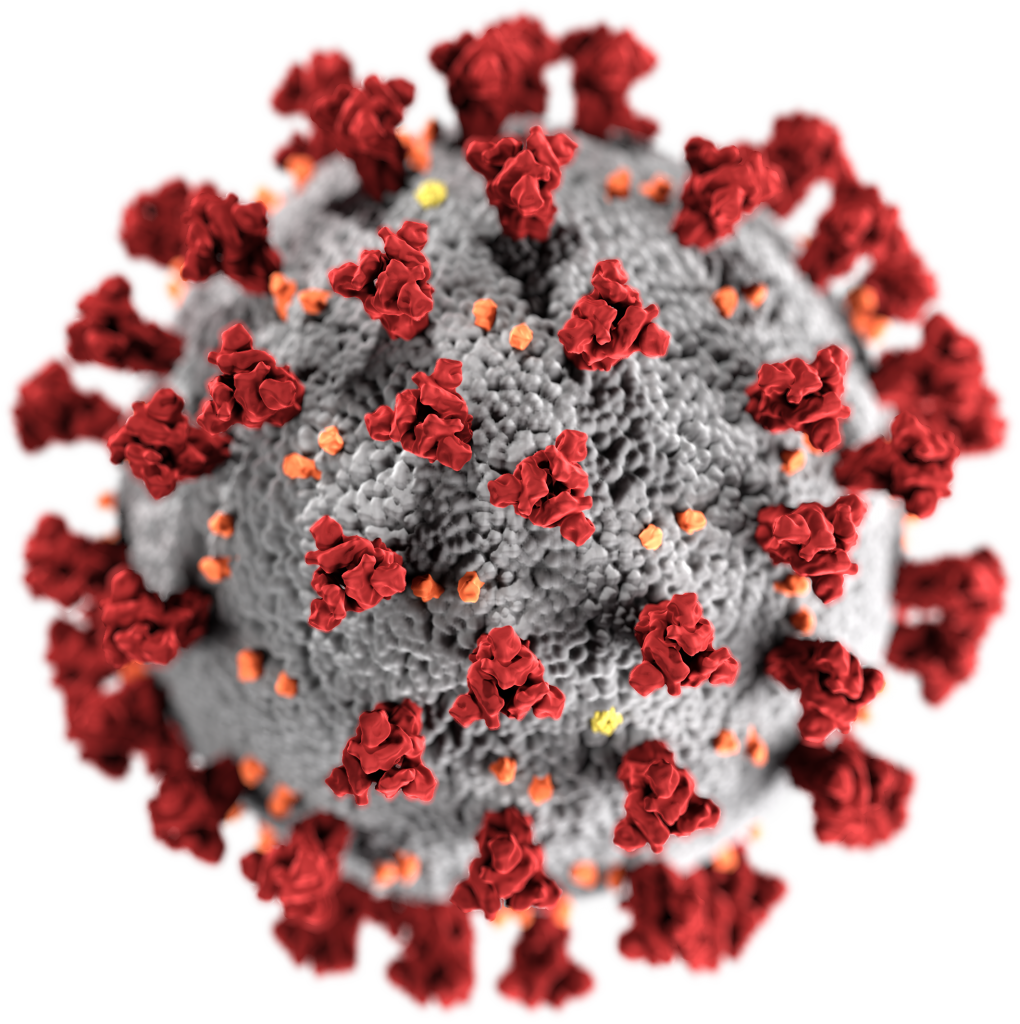
The COVID-19 Coronavirus outbreak is devastating, and life-changing. At the moment, we can have no idea whether the advice and restrictions are too little too late, or a huge overreaction … perhaps what’s more disturbing is that governments across the world seem to be so unprepared for a new virus outbreak, which was inevitable, and we’re lucky this one has a mortality rate that’s relatively low. Hopefully we’ll be better prepared next time – because there will be a next time.
But you really can’t help admiring viruses. That something so simple can cause such devastation, and has the potential to wipe out our species, is remarkable. So why do viruses exist, and what are they?
One way of looking at viruses is that they’re the most advanced life forms on the planet. Assuming the sole purpose of all life is to make more copies of itself, there are two ways you can evolve: to become more and more complex, developing new, innovative ways to dominate your environment and compete with other species, as humans and other mammals have done; or to simplify and evolve into something that’s so reduced that it only includes the most basic means to survive and replicate, as viruses have done.
I’m defining ‘life form’ here as something capable of self-replication. Viruses aren’t ‘living’ in the normal sense, in that they have no metabolism of their own. Because they are entirely dependent on more complex life forms to replicate themselves, they must have evolved from something more complex, which simplified and adapted to an entirely parasitic lifestyle. Pretty much all other life forms are parasitized by viruses, including bacteria, which are attacked by relatively large and complex viruses called phages. But most viruses are tiny – imagine a queue of 10,000 of them lined up end-to-end; it would be about a millimetre long. That’s only about a thousand times the size of a single atom of iron.
The viruses that parasitise all eukaryotic organisms (life forms that aren’t bacteria, mostly) really are very simple. They are a short strand of DNA or RNA carrying the viral genetic code enclosed in a protein capsule. Coronaviruses use RNA to carry their genetic code. The capsule has receptors on it that make it stick to particular cells in the species it parasitises, and gets itself absorbed into the cell. Inside the cell, there is all the equipment to make proteins, and to duplicate the virus’s genetic material. Once in the host cell, the virus protein capsule dissolves, and the bit of genetic material inside hijacks this equipment to make more copies of the virus.
There are disadvantages to being so simple. Our DNA, inside the nucleus of our cells, is what normally instructs this cellular equipment to make the proteins we need to build ourselves and keep our bodies running. It’s well protected, with enzymes that check the DNA replication process to ensure mistakes don’t happen when new strands of DNA are made for new cells. Viruses do have these ‘proofreading’ systems, but they’re less sophisticated – so when their genetic material is copied, there are a lot more mistakes. Most of these mistakes result in errors in the genetic code that mean it simply doesn’t work anymore. But very occasionally, a random mistake will occur that changes the virus in a way that’s beneficial to the virus – which is what happened with COVID-19, allowing it to ‘species jump’ to humans.
In eukaryotic and bacterial cells, DNA is used exclusively as the repository of genetic information, with identical coded strands of DNA in almost every cell in the organism. RNA is copied from the DNA and is similar in that it has the same ‘base pair’ structure as DNA that defines the genetic code. But it has shorter strands, made in the nucleus to copy the code carried by the DNA, and then transmit that code to cellular structures called ribosomes. There, the code is used to determine the structure of the proteins made at the ribosomes. That kind of RNA is called ‘Messenger RNA’ or ‘m-RNA’ – there are other types of RNA, but explaining all those gets complicated!
Rather than using DNA to make RNA as happens in cells normally, some RNA viruses use the RNA to make DNA, which then works in the ‘normal’ way to code more copies of the virus – hence they’re sometimes known as ‘retroviruses’, because the coding works in reverse. Such retroviruses can even incorporate the DNA they make into the host cell DNA, so the infection becomes permanent, it’s part of the host’s own genetic material (which is how HIV works). However, Coronaviruses don’t do that, they replicate their RNA genetic code directly by getting the host cell to simply make more identical RNA.
There are disadvantages to using RNA for genetic coding. RNA is less stable than DNA, so it’s more susceptible to physical damage than DNA, especially from UV light.
The cells infected by the virus need to serve the virus two purposes: firstly, to make copies of the virus, and secondly, to get those viruses to a new host. So infecting cells in the respiratory tract is ideal, as by provoking coughs and sneezes, the virus gets easily spread to a new host.
That’s it about viruses. Nifty, simple, adaptable, beautifully efficient. So what does all that mean for COVID19? Probably nothing much, beyond the hand-washing, self-isolation and all the other advice, but it’s useful to know your enemy and know how they function. COVID-19 does seem to have some unusual features that it’s managed to evolve, in particular the ability to survive three days on surfaces (although not outdoors, because of the UV light damage). But it’s new, so we don’t understand its epidemiology. Knowing how it works is one thing. Knowing how its characteristics play out in an epidemic, or pandemic, is something quite different.
Reasons to be cheerful? The sensitivity of the RNA in the virus to UV light could help kill it off as UV levels start to rise through spring. The huge majority of cases have been recorded in the northern hemisphere, where it’s winter and there’s less UV light around. And maybe governments will learn some lessons, to make us better prepared for the next time this happens. If the mortality rate of this virus had been significantly higher (Ebola has a mortality rate of 90%) the consequences could have been catastrophic, and potentially a near-extinction event. We have to learn from this – we must make sure that after this is over, we don’t all just forget about it and get on with everything as normal. We need to find ways to develop vaccines faster, and create international facilities to make new vaccines in bulk, as soon as they’re developed. We need to make sure the structures are in place to support vulnerable groups, prevent panic buying, and protect the economy, rather than making it up as we go along. We need to do some sophisticated modelling of different potential scenarios, and prepare for them.
We will get through this, and it probably won’t be as bad as the worst-case scenario we’ve been hearing about – that’s the thing about ‘worst case scenarios’, they’re not likely to be realised. The worst-case scenario for driving to the shops is that you get killed in a car crash on the way. That doesn’t mean you expect it to happen, but you prepare for it, or the car manufacturers do, because just occasionally, it will happen to someone.
So enjoy your self-isolation, and try to limit your anxiety – being anxious depresses your immune system. We have to see this through, help others in whatever ways we can, and learn from it.

A very useful article – knowledge is power as they say – I think there can be a positive from all this – certainly it has helped me think about the impact of my actions on other people. I care for an elderly mother (85) and have just lost my own father in Feb 2019 and yesterday my father in law passed away in the conquest – so it has made me appreciate the good things in life – friends and family and just the joy of being alive – Spring is here at last and I will be planting my moneymaker tomatoes in my greenhouse at the end of March – I fry these with garlic that I have grown in my garden in some butter and olive oil for a wonderful dish of tomatoes on toast.